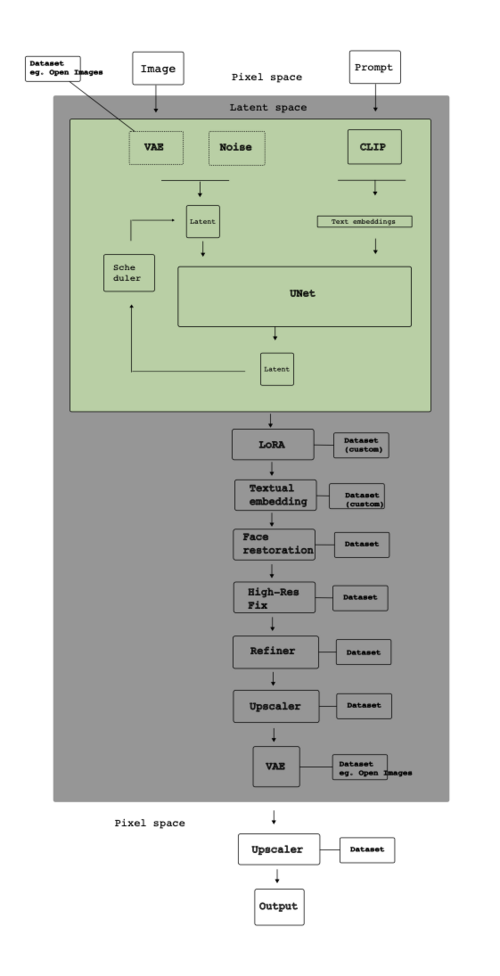Latent space
From CTPwiki
Reference to Diffusion

What is the network that sustains this object?
- How does it move from person to person, person to software, to platform, what things are attached to it (visual culture)
- Networks of attachments
- How does it relate / sustain a collective? (human + non-human)
In Stable Diffusion, it was the encoding and decoding of images in so-called ‘latent space’, i.e., a simplified mathematical space where images can be reduced in size (or rather represented through smaller amounts of data) to facilitate multiple operations at speed, that drove the model’s success.[1]
Once trained, CLIP can compute representations of images and text, called embeddings, and then record how similar they are. The model can thus be used for a range of tasks such as image classification or retrieving similar images or text. [2]
From "Maps": _Secondly, there is a 'latent space'. Image latency refers to the space in between the capture of images in datasets and the generation of new images. It is a algorithmic space of computational models where images are, for instance, encoded with 'noise', and the machine then learns how to how to de-code them back into images (aka 'image diffusion')._
How does it evolve through time?
Evolution of size
How does it create value? Or decrease / affect value?
With its material form: the weights. Gains value with adoption.
Gains value by comparison. Ability to do what cannot be done by others or less well.